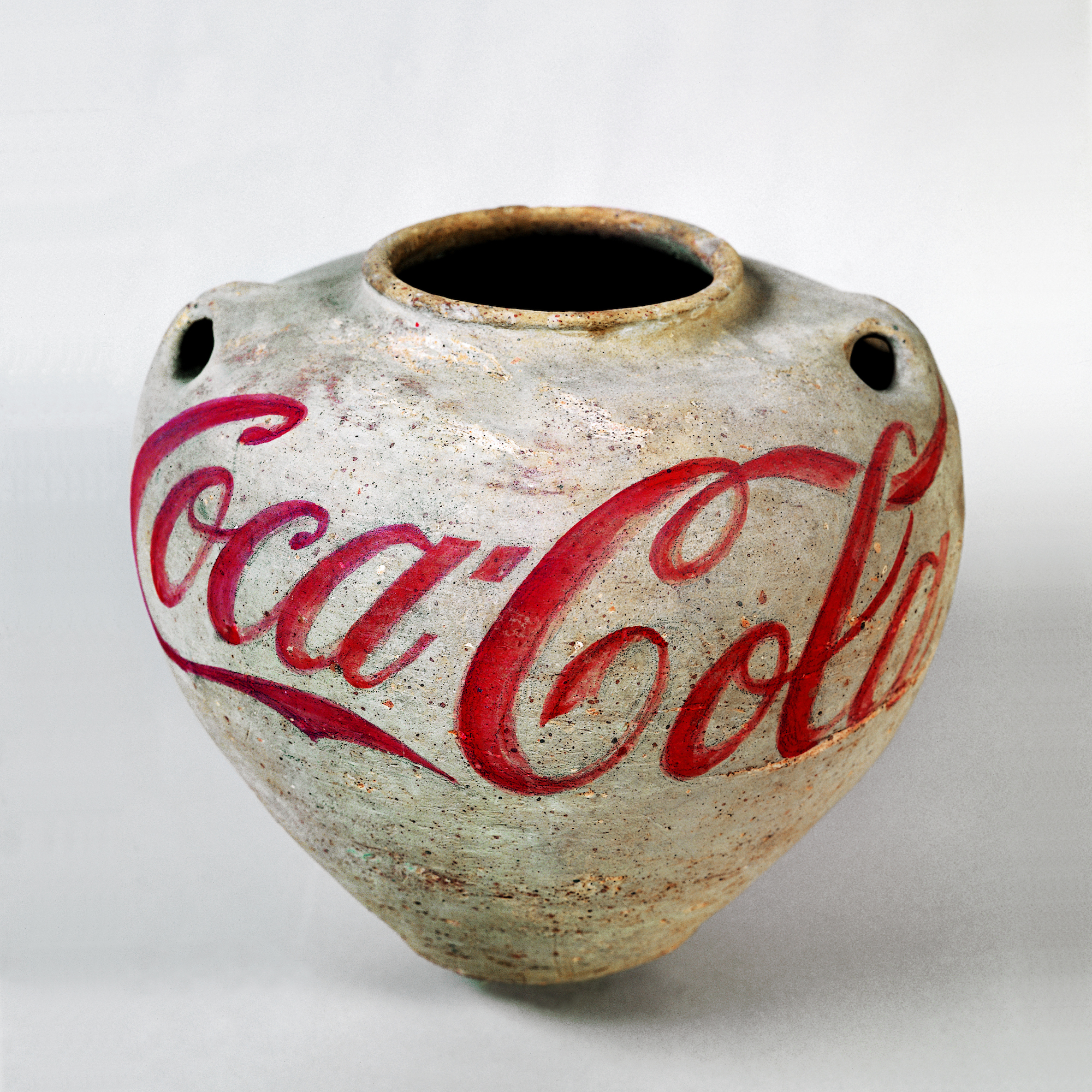
Ai Weiwei, Han Dynasty Urn with Coca-Cola Logo, 1993 © Ai Weiwei Studio. Courtesy Lisson Gallery
With the warmer weather and summer approaching, it’s difficult to resist fantasies of summer holidays in sleepy seaside towns—whether on a Greek island or British coastal resort. Slouched in a sticky plastic chair in the sun, your gaze might move to the fridge of chilled drinks, or perhaps the clapped-out old ice cream freezer at the beach cafe. These coolers, more often than not, will be emblazoned with the faded insignia of a well-known soft drinks brand—Coca-Cola. Perhaps peeling away slightly from the side of the fridge, it nevertheless makes its mark. The logo is almost as ubiquitous as the cheap white wine and flip flops that inevitably come out on holiday—no matter where in the world you are.
The familiarity of the Coca-Cola logo is testament to the quiet yet relentless workings of globalization. The distinctive red lettering has penetrated into general consciousness enough to become almost invisible; an inescapable, immediate assertion of consumer culture. Its impact as a symbol not only of consumerism but of wider popular culture has made it ripe for appropriation by artists. From Andy Warhol to Ai Weiwei, the logo is an exercise in iconoclasm; a mark of modernity, of America and of multinational market domination. For Ai Weiwei, it represents the tides of change and cultural conflict washing over his native China.
With his ongoing Coca-Cola Vase series the artist’s message is clear. The well-worn logo is painted carefully onto Han-dynasty vases, the emblem of American capitalism juxtaposed with an ancient Chinese craft. It’s as simple as it is subversive. Like his more famous Dropping a Han Dynasty Urn (1995), it delivers a blow to the seemingly unshakeable artefacts of history, rethinking their purpose and place in the modern world. Ai Weiwei has continued the series ever since its first iteration back in 1993, making it his longest running work.

“ From Andy Warhol to Ai Weiwei, the logo is an exercise in iconoclasm; a symbol of modernity, of America and of multinational market domination”
China itself is undoubtedly undergoing a process of remarkable transformation; in Beijing (where Ai Weiwei lived and worked for many years) entire alleyways and narrow historic courtyards (named “hutongs”) are being pulled down by the authorities. They are replaced with brand new buildings that are more in keeping with the vision of modern China that the government has projected for the nation. Even Ai Weiwei’s own large-scale studio, located in the north-east of the city, was torn down just last year. Some argued that its destruction was a political act on account of Ai Weiwei’s own well-known criticism of the Chinese government’s human rights record, while others pointed out its disappearance is not out of keeping with the swathes of reconstruction taking place across Beijing.
Ai Weiwei’s Coca-Cola Vases hold a mirror up to a country in flux, where east and west rub up against each other but do not settle into easy formation. Capitalism has infiltrated China, and there is no better example of this influence than the ubiquitous Coca-Cola logo, bright, brash and so familiar. Even as Weiwei himself has lived outside China since 2015, instead making Berlin his home, the networked culture of an increasingly global world continues to transform his home country. His vases offer a clear statement on these contrasts, as experienced on both a personal and a political level, using the visual power of symbolism when no words will do.





